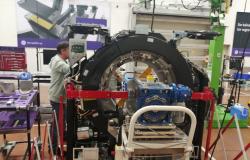In Luxembourg, nestled in the heart of Europe, the European Investment Bank (EIB) operates quietly but significantly, shaping the continent’s future through strategic investments. Despite its significant impact, the EIB remains little known to the public. Our recent interviews with Sabine Parisse and Tanguy Desrousseaux at the EIB shed light on the central role of the bank and the unique contributions of their teams.
A bank like no other
The EIB stands out from other European institutions. As Tanguy Desrousseaux, head of the public sector and infrastructure lending team, pointed out, the EIB is an autonomous entity which, although owned by EU Member States, is not a basic institution of the EU and is not directly attached to the political structure of the European Union. Unlike commercial banks, the EIB prioritizes long-term investments with substantial socio-economic and environmental benefits. This distinct approach is facilitated by its AAA rating, which corresponds to the highest creditworthiness. This rating allows the EIB to raise funds at favorable rates and pass these benefits on to its borrowers.
Strengthening the public sector in Europe
Mr Desrousseaux’s team manages an impressive portfolio, lending around €6 billion per year in France, Benelux and Ireland. Their projects cover a wide range of sectors, including social housing, health, education, transport and renewable energy. “Our goal is to support projects that have a tangible impact on people’s lives,” explains Mr. Desrousseaux. This commitment is reflected in the multitude of projects financed by the EIB, from high-speed rail lines to hospitals and green energy initiatives.
Rigorous evaluation of projects
One of the hallmarks of the EIB is its in-depth project evaluation process. Mr Desrousseaux stressed that the bank’s support depends on the viability of the project and its adherence to EU priorities. Projects are meticulously evaluated from the point of view of their technical, environmental and economic soundness. This rigorous review ensures that every euro invested by the EIB contributes to sustainable development and aligns with the broader objectives of the European Union.
Beyond its lending activities, the EIB also provides advisory services, helping public and private sector entities overcome challenges related to project implementation. This dual role of lender and advisor makes the EIB an essential partner in the European development landscape.
Challenges and opportunities
Despite its successes, the EIB faces major challenges. As Mr Desrousseaux pointed out: “the demand for investments far exceeds the Bank’s capacity”, so finding a balance between these needs and respecting strict criteria for projects is a delicate task. Furthermore, the EIB’s role in financing environmentally beneficial projects has grown in importance, reflecting the EU’s commitment to the Paris Agreements and the green transition.
Broadening the scope: Funding beyond Europe
Ms. Sabine Parisse, who heads communications in Belgium and Luxembourg, highlighted the efforts made by the Bank to improve transparency and public awareness. “It is crucial for us to communicate effectively about the impact of the EIB,” she noted, emphasizing the importance of informing the public about the bank’s contributions to Europe’s development. Sabine Parisse underlined that while the EIB mainly supports projects within the EU, it also extends its scope of action on a global scale: “the EIB’s mission is to support the EU’s external policies”, she explained. “This means we can finance projects in non-EU countries, particularly those that are consistent with our core objectives of environmental sustainability and socio-economic development. », she will give us the example of different projects around water and accessibility to water in Africa.
Ms Parisse clarified that entities eligible for EIB loans include public sector bodies, private sector companies and financial institutions. This diversity allows the EIB to support diverse initiatives, from large infrastructure projects to small businesses, thereby promoting development well beyond Europe’s borders.
Un impact tangible
Mr Desrousseaux illustrated the influence of the EIB with striking examples taken from his travels in France. Indeed, whether it is financing the TGV line, supporting local tramways or renovating universities, the EIB’s footprint is visible in multiple facets of daily life in many cities in France and on a European scale. These investments not only improve connectivity and education, but also promote sustainable urban development.
The European Investment Bank may not be a household name, but its impact on the continent is undeniable. Through its strategic investments and commitment to long-term development, the EIB plays a crucial role in building a prosperous and sustainable Europe. As the EU continues to face economic and environmental challenges, the EIB’s contributions will be more vital than ever.






